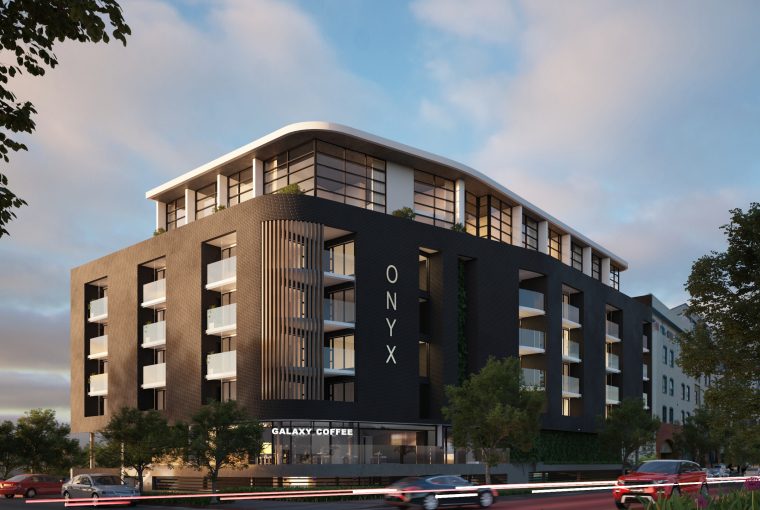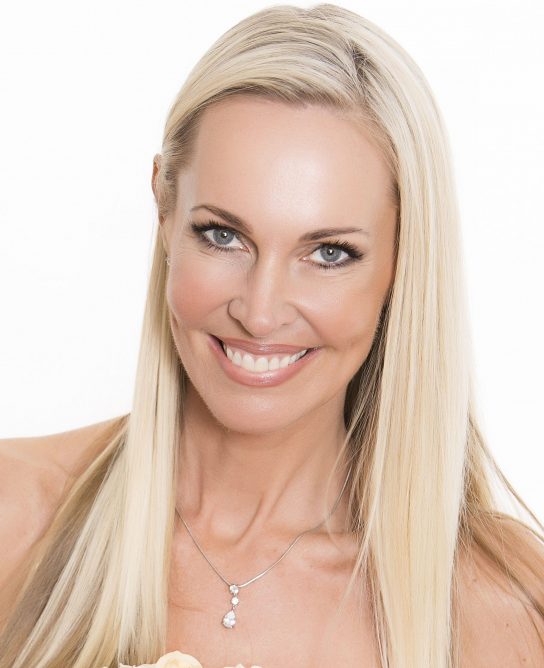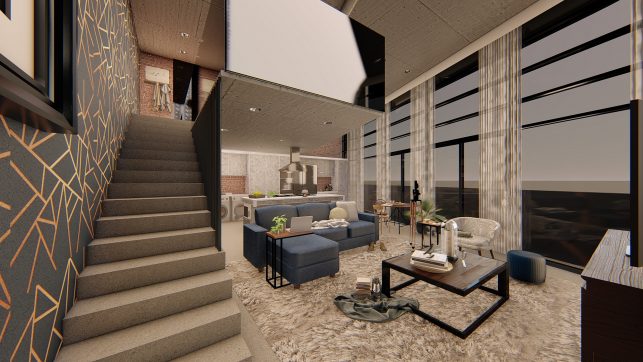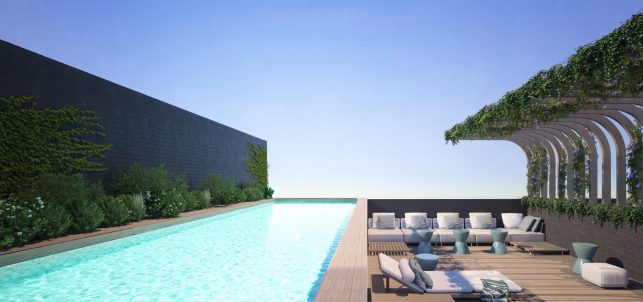Building a property investment portfolio makes sense
 Pam Golding Properties is marketing a one-bedroom apartment in this brand-new residential development. The Onyx (see exterior of The Onyx and pool area), in prime uMhlanga, is designed with contemporary and elegant finishes throughout, offering a sophisticated urban lifestyle. Finishes include raw brick feature walls, high gloss kitchen cupboards, quartz countertops and exposed ceilings, setting the development apart from anything else on offer in the area. The complex includes a gym, swimming pool and braai area and 24-hour manned security. The ideal investment opportunity, and selling off-plan, the one-bedroom unit is priced at R1 248 450 (no transfer duty payable) through Pam Golding Properties uMhlanga office. Favourable rental returns are anticipated.
Pam Golding Properties is marketing a one-bedroom apartment in this brand-new residential development. The Onyx (see exterior of The Onyx and pool area), in prime uMhlanga, is designed with contemporary and elegant finishes throughout, offering a sophisticated urban lifestyle. Finishes include raw brick feature walls, high gloss kitchen cupboards, quartz countertops and exposed ceilings, setting the development apart from anything else on offer in the area. The complex includes a gym, swimming pool and braai area and 24-hour manned security. The ideal investment opportunity, and selling off-plan, the one-bedroom unit is priced at R1 248 450 (no transfer duty payable) through Pam Golding Properties uMhlanga office. Favourable rental returns are anticipated. Residential property has always been perceived as a relatively stable and safe investment class, having proved its ongoing resilience over decades through changing market cycles, including the Covid-19 pandemic and ensuing lockdowns, and the severe global recession experienced in 2008/2009.
Says Carol Reynolds, Pam Golding Properties area principal for Durban Coastal: “Property is appealing as a solid investment class because, if it is correctly geared, investors can leverage their property portfolio and effectively use other people’s money to grow their asset base.”
Property has the potential to provide a regular, escalating income as well as, over time, enjoying healthy capital growth. Globally, many fortunes have been made through investment in property and today’s tighter market conditions present an opportunity to acquire property at reasonable prices.
Reynolds says the first priority is to decide what type of property investment you are looking for. For example, you may want to buy and then flip for profit, which is a shorter-term investment strategy and involves ensuring that you acquire a good purchase with potential to renovate and resell in a short space of time.
“From a broader perspective, if you’re looking to invest in property generally, then you will need to consider both your potential returns as well as the potential capital growth on your asset. Your strategy may be to buy, renovate and flip, or it may be simply to buy and hold either to live in or rent out for additional income and as an investment property”.
Reynolds says if flipping the property is your aim, then it is preferable to buy a property that requires cosmetic changes rather than structural ones, as the key is to try and spend around 15 percent of the value of the property on renovations. If the renovations are extensive, and therefore expensive, you may need to hold onto the property for a period of time in order to maximise the gain.
“If you are looking to flip, then acquisition costs need to be factored into your sums, and capital gains tax also needs to be taken into account. Ideally, you want to buy for under R3 million, spend a maximum of R450 000 renovating and then achieve a gain on the resale of at least 10 percent of your total expenditure. Your calculations need to include finance costs, transfer costs and then capital gains tax. Some investors prefer to play in the market in the lower price range because transfer costs are much less. However, in this price category one needs to be aware of not over-spending on the renovation, and then struggling to recover the costs on the sale.
“If renovating is preferred, always consider the ceiling price achieved for the area that you’re investing in, which is where an experienced and informed real estate agent can assist. The last thing you want is to overcapitalise and then find it hard to sell. When renovating, try to complete the project within a few months so that you can flip quickly and aim to sell the home within six months – the quicker the better to reduce holding costs.”
Reynolds says when you are considering medium to longer term investment options, there are essentially three key factors to bear in mind: risk, return and growth. “If minimising risk is important, then you should consider a diversified portfolio or perhaps a portfolio with a number of small investments spread across a few nodes. If you have a lot of money to invest, then perhaps longer- term capital appreciation is your main priority, in which case you require a solid investment portfolio in the most sought-after areas.
“From a rental perspective, I suggest that you consider investing in multiple smaller properties, gear them and let them pay for themselves over time. Property is one of the few asset classes against which one can borrow, which is especially beneficial when interest rates are still relatively low, which means that the benefits of gearing can be maximised, improving the net return to the investor. In my opinion, this strategy is far better than putting all your eggs into one, more lavish basket. Take your budget and spread it over a mix of properties, rather than tying it up into a single property. If you want to minimise risk then property investing, like all investing, requires diversification.
“I suggest suburbs with high rental demand in hotspots and that you then look to acquire one or two-bedroom apartments in good complexes. Sometimes one-bedroom units actually generate higher yields, so I would prefer to have two one-bedroom units than one two-bedroom unit.
“A professional estate agent can advise you where property can be acquired at reasonable prices, but bear in mind that bargains are hard to come by in good areas. It is better to pay a market-related price in an area which has shown price resilience under difficult economic conditions. It is also not sound investment logic to buy the best property in the area. Properties which are best suited to capital growth often cost more and offer a lower yield, while those better suited to maximising yield often cost less and offer lower capital growth prospects.”
Reynolds says if you are buying a sectional title property, obtain the latest Body Corporate financial statements from the managing agents, which will give an accurate picture of the state of affairs of the block and indicate any issues such as the likelihood of a special levy being raised. For freestanding homes, check the title deeds and ensure the structure is in accordance with the approved plans and if it’s in a new area check the precinct plan to see if any new developments are planned for the area, such as new housing developments, shopping centres and so on.
“Buying off-plan is also a good strategy as you can put down a deposit and as it takes a few years to take transfer, you can then enjoy the price escalations as the development matures, which means that the value of your unit appreciates at the same time. If you have the means available to invest in more than five off-plan units, there are tax savings available, making the investments even more attractive.
“When taking risk into consideration, tenant profiling is key. Statistics show that the most reliable tenants are those in the R5 000 to R15 000 per month category. This means that from an investment perspective, properties that sell for between R1 million and R3 million are your best investments from a rental return perspective. A good way to get started is to try and find a sectional title unit with two bedrooms for under R1 million as there are no transfer duty costs. At this level, you should try to put down a deposit of R500 000 and gear the balance by way of a rental of at least R6 000 per month. If your rent just covers your costs – or is slightly lower than your costs – then you will enjoy the tax benefit. Essentially, you now own an asset valued at R1 million, but you have only had to pay R500 000 for it. Remember however, that you need to be able to cover mortgage repayments, building insurance premiums, and any necessary maintenance and if relevant, a letting agent’s fees.
“In time, your rent will escalate and if you are able to pay in an extra amount of say R1 000 to R2 000 per month on your bond, you will very quickly reach a position that will enable you to leverage this asset and use this access facility to enable you to acquire your second sectional title unit. If you have been ‘overpaying’ on your bond each month, you will then be able to utilise this access facility to put down a deposit on your next apartment and then secure a tenant to pay your bond instalment on your second property.
“Remember that a home loan is the best vehicle for borrowing money, and my advice to all consumers is to aim to have no debt at all, except for a home loan access facility. This is the cheapest way to borrow money and finance investments.”
Concludes Reynolds: “By applying this strategy, after an initial investment of R500 000 you may be able to acquire two or three units each valued at R1 million – R2 million over a few years and suddenly you own an asset base of several million rand. As a small investor this is the best way to get started as your risk is minimal, your borrowing needs are small and if you ever need to quickly off-load a property, this price range is the easiest to sell. There is also an abundance of tenants in this price category, so there is very little risk of your property being vacant and costing you every month while you wait to place a tenant. Bear in mind, in residential property, location is always a critical factor. The smallest, average property in a sought-after area is likely to increase in value at the same rate as other properties.
“Property is a unique investment class because it is tangible and because investors are able to gear their investments with their rental income. Through gearing, and even syndication, small investors can get started with a relatively small deposit and in time, their asset base can grow into something of significant value. A reputable estate agent can assist you in making an informed decision.”
For further information contact Pam Golding Properties Carol Reynolds on 082 802 2788 or email carol.reynolds@pamgolding.co.za .
Posted by The Know - Pam Golding Properties







